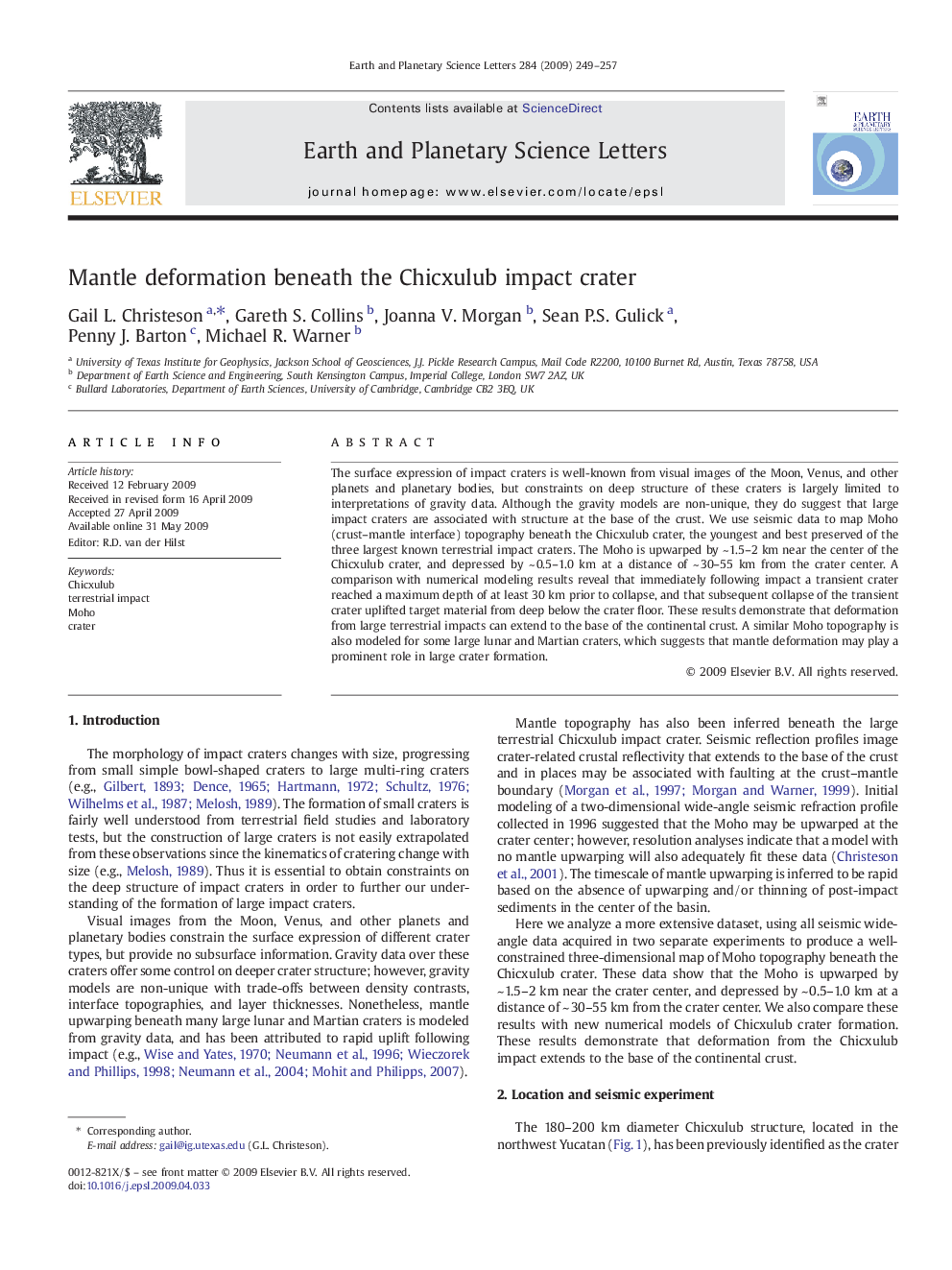| Article ID | Journal | Published Year | Pages | File Type |
|---|---|---|---|---|
| 4679217 | Earth and Planetary Science Letters | 2009 | 9 Pages |
The surface expression of impact craters is well-known from visual images of the Moon, Venus, and other planets and planetary bodies, but constraints on deep structure of these craters is largely limited to interpretations of gravity data. Although the gravity models are non-unique, they do suggest that large impact craters are associated with structure at the base of the crust. We use seismic data to map Moho (crust–mantle interface) topography beneath the Chicxulub crater, the youngest and best preserved of the three largest known terrestrial impact craters. The Moho is upwarped by ~ 1.5–2 km near the center of the Chicxulub crater, and depressed by ~ 0.5–1.0 km at a distance of ~ 30–55 km from the crater center. A comparison with numerical modeling results reveal that immediately following impact a transient crater reached a maximum depth of at least 30 km prior to collapse, and that subsequent collapse of the transient crater uplifted target material from deep below the crater floor. These results demonstrate that deformation from large terrestrial impacts can extend to the base of the continental crust. A similar Moho topography is also modeled for some large lunar and Martian craters, which suggests that mantle deformation may play a prominent role in large crater formation.
